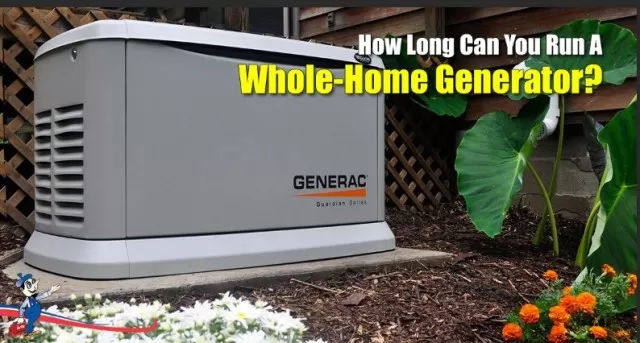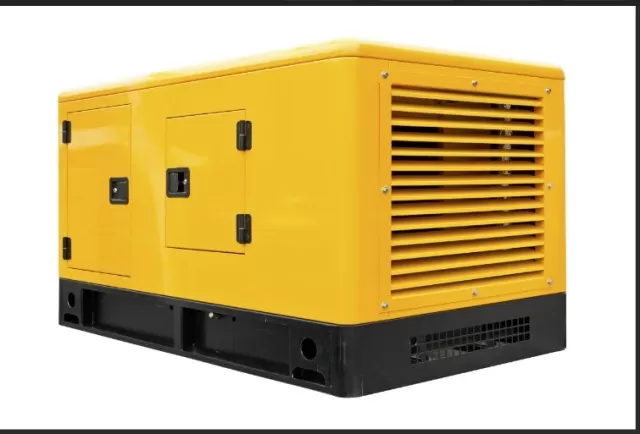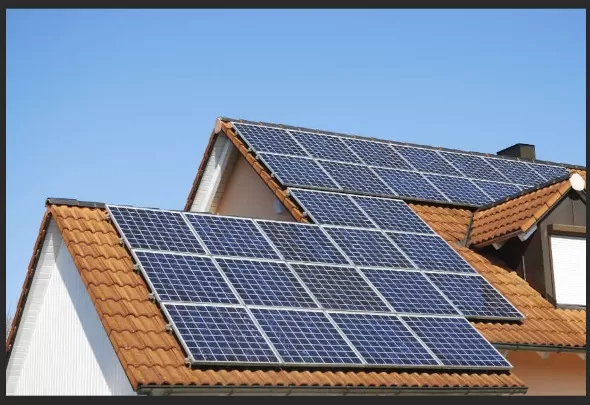Guide to Installing a Whole-House Generator. Contemplating the inclusion of a standby generator within your home’s infrastructure is indeed a prudent thought, one that holds the promise of enhanced reliability and comfort.
However, before delving into this transformative addition, it’s imperative to acquaint yourself with a series of essential insights pertaining to the installation process. These key considerations stand as guiding beacons, illuminating the path toward an informed and empowered decision.As you embark on this journey toward bolstering your home’s preparedness, these insights serve as a compass, guiding you through the nuanced landscape of standby generator installation. By assimilating these need-to-know facts, you empower yourself to make an educated choice—one that not only enhances your living environment but also fortifies your peace of mind in the face of unforeseen challenges.
Advantages of an Entire Home Generator: Ensuring Comfort and Security Beyond Power Outages

If you find yourself uncertain about the necessity of investing in a standby generator for your residence, it’s crucial to explore the remarkable advantages it offers.
Delving into the realm of whole-house generators reveals a range of compelling reasons why having one can be a game-changer for your household.
Imagine a seamless transition during a power disruption, where the home remains powered without skipping a beat.
Standby generators accomplish this feat through their automatic transfer switch, instantly activating the generator as soon as the mains power fades.
One of the standout features of these generators is their tailored sizing, which means they’re engineered to cater to the entirety of your home’s energy demands during a blackout, surpassing the capabilities of merely supporting a refrigerator and a handful of electrical outlets.
Moreover, standby generators are ingeniously linked to your property’s integrated natural gas or liquid propane supply, ensuring they can operate for extended periods without necessitating refueling.
This self-sustaining nature becomes invaluable, offering days or even weeks of uninterrupted power to keep your household functioning smoothly.
Consider the winter scenario where frozen pipes become an imminent threat.
With a whole-house generator in place, you can maintain a consistently warm environment, effectively safeguarding your plumbing system from potential damage caused by freezing temperatures.
Financial prudence is yet another significant perk.
By preventing food spoilage through sustained refrigeration and freezing capabilities, these generators play a role in reducing wastage and contributing to overall household savings.
However, the benefits go beyond mere practicality.
Picture enduring through prolonged storms and their aftermath while retaining your safety and connectivity. Standby generators empower you to remain updated on current events, keep your devices charged, and even indulge in some entertainment to while away the time, transforming the challenging period of power outages into a more manageable and comfortable experience.
In conclusion, the advantages presented by a whole-house generator extend far beyond the surface.
From ensuring continuous comfort and security during power disruptions to enabling savings, these remarkable devices stand as a testament to modern innovation in enhancing residential living conditions.
Evaluating Your Backup Power Requirements
Ensuring that your backup generator adequately caters to your household’s energy demands is a crucial consideration.
Properly sizing the generator is a nuanced task, involving factors such as reviewing past energy consumption, calculating the peak wattage each device draws during startup, and performing various mathematical equations. Many generator manufacturers offer online tools, known as generator size calculators, to provide customers with an initial estimation. Nonetheless, it’s advisable to seek the guidance of a professional to accurately determine the optimal size for a residential generator.
Although selecting the largest available standby generator might appear to be the safest approach, it’s important to recognize that oversized generators can be both noisy and inefficient.
Conversely, opting for an undersized generator is unlikely to yield a wise investment.
So, what’s the ideal compromise? Introducing the KOHLER 26 kW Home Generator.
This remarkable generator delivers an impressive 26 kilowatts of power while maintaining a noise level of just 56 to 67 decibels. Consequently, it possesses the capability to energize all critical systems, household appliances, and electronic devices within a spacious residence, all while emitting sound akin to that of a typical HVAC unit.
Truly, the KOHLER 26 kW Home Generator stands as the pinnacle of excellence among whole-house generators available in the market.
Exploring Fuel Options for Whole-Home Generators

At the heart of whole-home generators lies an internal combustion engine, a mechanical marvel that orchestrates the intake, compression, ignition, and subsequent exhaust of fuel.
This intricate dance of elements sets the cylinders in motion, culminating in the generation of vital power. Yet, it’s important to note that the type of fuel these generators consume can vary, providing homeowners with choices that align with their preferences and infrastructure.
Natural gas generators present an appealing option as they can seamlessly tap into the home’s existing piped natural gas supply.
This advantage ensures a constant and readily available fuel source, promoting convenience and reliability.
Alternatively, liquid propane generators offer another avenue.
They can be conveniently linked to sizable propane storage tanks, offering a dedicated reservoir of fuel to draw upon when the need arises.
Both natural gas and propane generators stand out as excellent selections.
Their operational attributes include minimal noise, environmental cleanliness, and impressive efficiency. The remarkable aspect is that the KOHLER 26 kW Home Generator stands as a beacon of versatility, catering to homeowners by offering a choice between these two fuel options.
Ultimately, the choice of fuel type becomes an opportunity for homeowners to align their backup power solution with their preferences and Resources, ensuring uninterrupted comfort and security during power disruptions.
Navigating Permits and Authorizations for Seamless Generator Installation
The journey to installing a whole-house generator involves more than a simple call to an electrician.
Before the generator can be seamlessly integrated into your home’s power infrastructure, there are crucial permits and approvals that must be obtained. This essential regulatory landscape underscores the importance of complying with local building codes, which can exhibit significant variations from state to state, county to county, and even city to city. Fortunately, a practical solution exists to streamline this intricate process.
Kohler dealers rise to the occasion by assuming the responsibility of securing all necessary permits and enlisting the services of dependable contractors on behalf of homeowners.
This strategic approach alleviates the often bewildering and stress-inducing task of permit acquisition, a significant step that ensures the smooth and compliant installation of a standby generator.
By entrusting this complex process to Kohler dealers, homeowners can proceed with confidence, knowing that their generator installation project is in capable hands.
This collaborative approach eliminates the guesswork, uncertainty, and potential pitfalls associated with navigating the intricate web of permits and approvals. As a result, homeowners can focus on the benefits of their impending whole-house generator, secure in the knowledge that every regulatory aspect is being diligently managed to ensure a successful and hassle-free installation experience.
The Prudent Choice: Why DIY Is Not Appropriate for Generator Installation

Embarking on a do-it-yourself (DIY) approach to connecting a generator to your home is strongly discouraged, particularly when dealing with whole-home generators.
This is a project that demands the expertise of licensed contractors due to its intricate and potentially hazardous nature. Whole-home generators operate at a significant power capacity, necessitating a secure tie-in to your home’s fuel source and electrical panel for proper functionality.
Attempting this task without the proper training and qualifications can lead to serious risks and complications.
Consider the installation of the KOHLER 26 kW Home Generator as a prime example.
During this process, a professional dealer will engage a skilled plumber to safely establish the connection between the generator and the natural gas or liquid propane supply. However, the intricacies extend beyond fuel lines.
The installation also involves an automatic transfer switch, a critical component that must be placed by a licensed electrician to ensure the precise execution of each step.
Optimal Timing for InstallationIrrespective of your geographical location, the wisest course of action is to acquire and install a home generator well in advance of its actual necessity.
Waiting until the brink of a major storm is ill-advised because the logistics involved, such as obtaining permits and coordinating various contractors, can be challenging to achieve on short notice. By making proactive arrangements, you not only ensure the safety and efficiency of your generator installation but also grant yourself peace of mind during unexpected power disruptions.
*The information is for reference only.